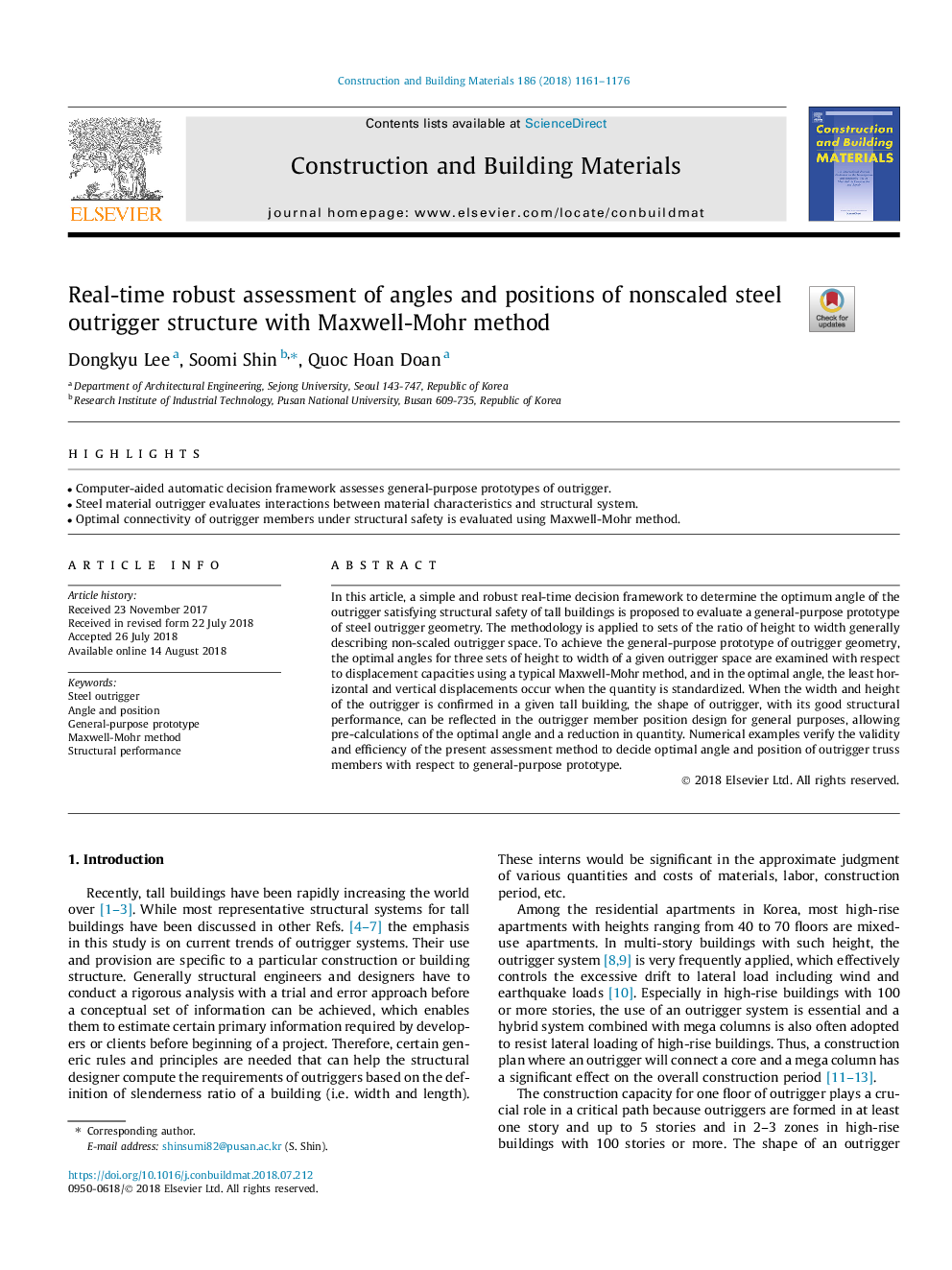| Article ID | Journal | Published Year | Pages | File Type |
|---|---|---|---|---|
| 11001053 | Construction and Building Materials | 2018 | 16 Pages |
Abstract
In this article, a simple and robust real-time decision framework to determine the optimum angle of the outrigger satisfying structural safety of tall buildings is proposed to evaluate a general-purpose prototype of steel outrigger geometry. The methodology is applied to sets of the ratio of height to width generally describing non-scaled outrigger space. To achieve the general-purpose prototype of outrigger geometry, the optimal angles for three sets of height to width of a given outrigger space are examined with respect to displacement capacities using a typical Maxwell-Mohr method, and in the optimal angle, the least horizontal and vertical displacements occur when the quantity is standardized. When the width and height of the outrigger is confirmed in a given tall building, the shape of outrigger, with its good structural performance, can be reflected in the outrigger member position design for general purposes, allowing pre-calculations of the optimal angle and a reduction in quantity. Numerical examples verify the validity and efficiency of the present assessment method to decide optimal angle and position of outrigger truss members with respect to general-purpose prototype.
Keywords
Related Topics
Physical Sciences and Engineering
Engineering
Civil and Structural Engineering
Authors
Dongkyu Lee, Soomi Shin, Quoc Hoan Doan,
